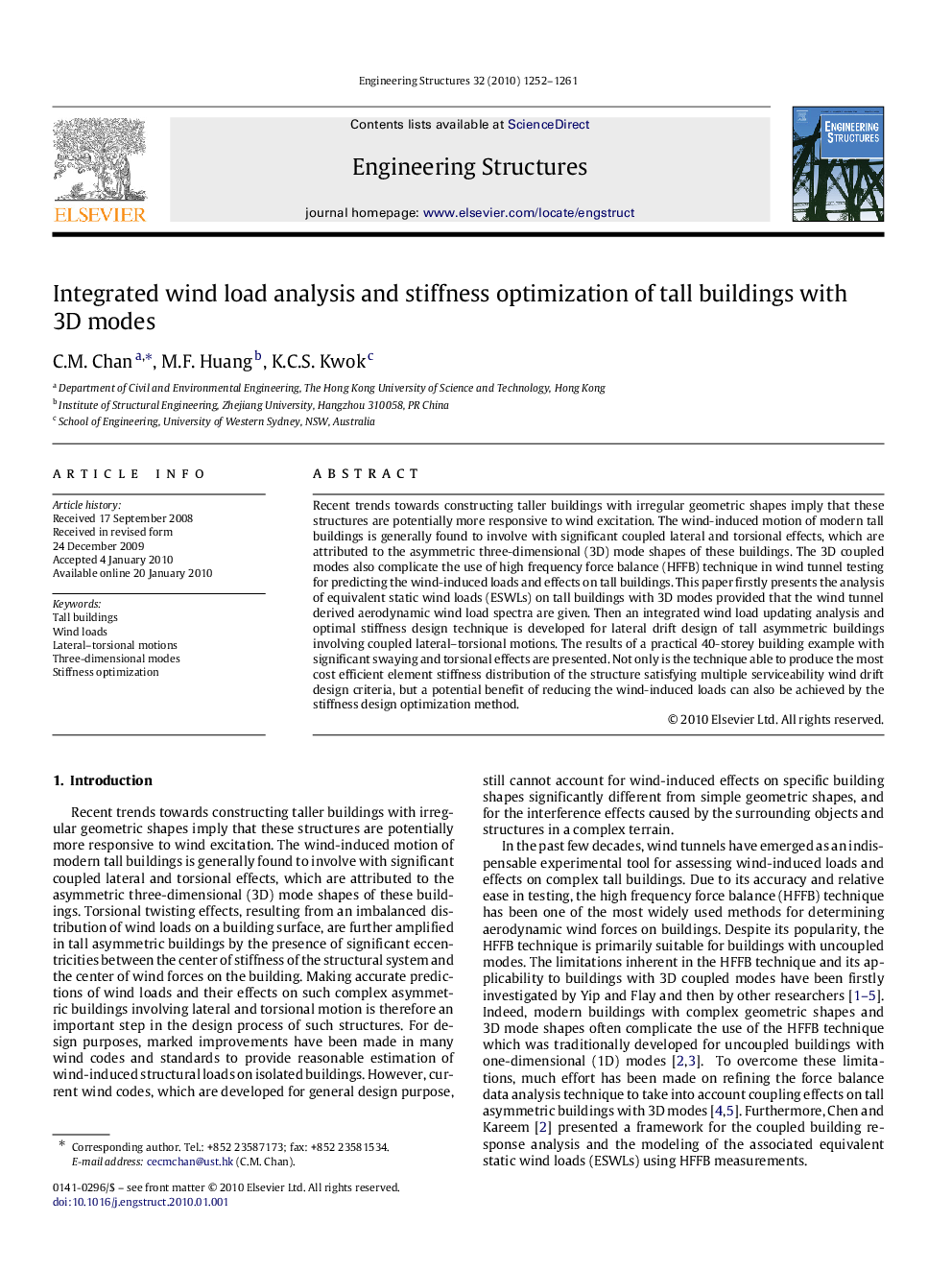| Article ID | Journal | Published Year | Pages | File Type |
|---|---|---|---|---|
| 268558 | Engineering Structures | 2010 | 10 Pages |
Recent trends towards constructing taller buildings with irregular geometric shapes imply that these structures are potentially more responsive to wind excitation. The wind-induced motion of modern tall buildings is generally found to involve with significant coupled lateral and torsional effects, which are attributed to the asymmetric three-dimensional (3D) mode shapes of these buildings. The 3D coupled modes also complicate the use of high frequency force balance (HFFB) technique in wind tunnel testing for predicting the wind-induced loads and effects on tall buildings. This paper firstly presents the analysis of equivalent static wind loads (ESWLs) on tall buildings with 3D modes provided that the wind tunnel derived aerodynamic wind load spectra are given. Then an integrated wind load updating analysis and optimal stiffness design technique is developed for lateral drift design of tall asymmetric buildings involving coupled lateral–torsional motions. The results of a practical 40-storey building example with significant swaying and torsional effects are presented. Not only is the technique able to produce the most cost efficient element stiffness distribution of the structure satisfying multiple serviceability wind drift design criteria, but a potential benefit of reducing the wind-induced loads can also be achieved by the stiffness design optimization method.
